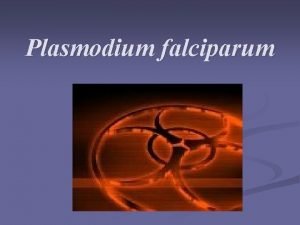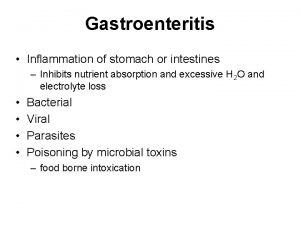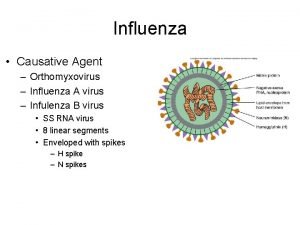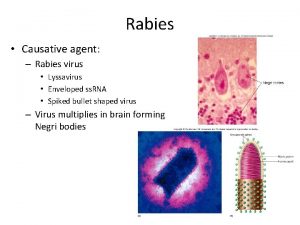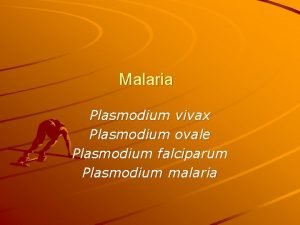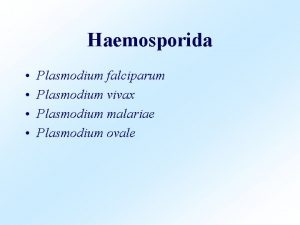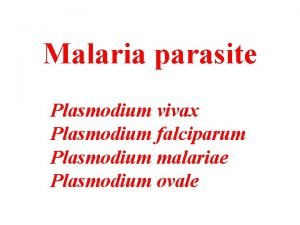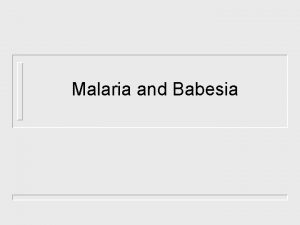Plasmodium It is causative agent of malaria out





- Slides: 5

Plasmodium • • It is causative agent of malaria. out of 100 species of malaria only four (P. vivax, P. ovale, P. malariae and P. falciparum ) present in human beings. Parasite is digenetic, is with two hosts. Female anopheles (primary host) as sexual reproduction occur in it. Human being is biologically secondary host • Monkey is reserved host • Infective stage of plasmodium is sporozoite

When female anopheles, containing sporozoite of plasmodium in her salivary glands, bites a man, the sporozoites released into blood stream of human being. After 3 days of entrance, sporozoites start dividing in the parenchyma cells of liver and attain schizont stage.

• Now these schizonts present in the R. B. C and get changed into trophozoites. • Then divide into 6 to 36 merozoites. • Due to high pressure the R. B. C. ruptures and releases the merozoites into blood plasma. • These attach to other R. B. C and after 10 days, the no. of parasites becomes large and they produce toxin which cause fever in man. • After 1 week the oocyst is changed into sporozoites which go to the slivary gland of the female mosquito and transferred to the body of the man by the bite of mosquito and thus completes its life cycle in man and mosquito. • P. ovale (Quartan malaria) P. malaria (Quartan malaria) P. falciparum(malignant malaria)

Symptoms of Malaria • • • a) b) Anemia Enlarged spleen Pigmentation of skin Pigmentation of urine It may lead to black water fever in P. falciparum due to excessive intavascular haemolysis. Intermittent fever preceded by chills. Actual attack of malaria or paroxysm has 3 stages. Rigor stage. Period of intense chill and shivering , fast pulse and lasts for about an hour. Febrile stage. Rise in body temperature to 104˚-106˚F(40. 5˚-41. 6˚C) Defervescent stage. A lot of sweating occurs. This decreases the body temperature to almost normal.

Control of Malaria • Sprayig human habitations, cattle sheds and surroundings with insecticides. • Filling small ditches. • Covering surface of stagnant waters with oil to suffocate larva and pupae due to non availability of air. • Release of ducks, fish sticklebacks and Minno into water bodies. • Growth of insectivorous or carnivorous aquatic plants like Utricularia and Aldrovanda. • Inoculation of water bodies with cyanobacteria, Aulosria and anabena, they release chemical toxic to larvae. • Introduction of Bacillus sphericus in water bodies. • Release of sterile female Anopheles.

